SUMMARY HIGHLIGHTS
- Namba is the ideal place to stay in Osaka. If you can, try booking a hotel near Namba Station.
- Dotonbori is the liveliest part of Namba and where you’ll find the iconic Glico Running Man.
I’ve been to Osaka more times than I can remember and Namba is still my favorite part of the city. This vibrant district in the city’s Minami (south) area combines culture, nightlife, shopping, and street food in the best ways possible.
Together with Umeda (Kita), Namba forms one of two major city centers in Osaka. It’s more touristy and less polished than Umeda, but personally, I don’t mind it. On the contrary, I’ve come to look for its frenzied energy on every return trip to Osaka.
Namba’s dizzying mix of neon-lit signs, shopping arcades, and mind-numbing selection of street food is what made me fall in love with Osaka in the first place. It may be crowded and chaotic, but it’s endlessly entertaining, and for me, the best part of Osaka.
In this article, we’ll introduce the various points of interest in Namba, to help first-time visitors make sense of the area and navigate like a pro.
VISIT OSAKA QUICK LINKS
To make your Osaka trip planning a little easier, we’ve compiled links to top-rated hotels, tours, and other travel-related services here.
HOTELS
Recommended hotels around Namba Station
- Luxury: Swissotel Nankai Osaka
- Midrange: Hotel Keihan Namba Grande
- Budget: 民泊富士なんば MinpakuFujiNamba
EXPERIENCES
- Sightseeing Tour: Guided Walking Tour with a Native Expert – Top Sights
- Food Tour: Osaka Local Foodie Tour in Dotonbori and Shinsekai
- Market Tour: Kuromon Market Walking Street Food Tour in Osaka
- USJ Tickets: Universal Studios Japan Studio Pass
- Tea Experience: Experience the Edo Period Salon Culture of Bunjin Sencha
- Cooking Class: Cooking Classes in Osaka
OTHER SERVICES
WHAT IS NAMBA?
Namba refers to the area around Namba Station. Also referred to as Minami, meaning “south”, it’s one of two major city centers in Osaka, the other being Umeda or Kita (north), which refers to the area around Osaka and Umeda stations.
Namba is a lively entertainment and shopping district that’s home to countless restaurants, shops, street food stalls, bars, cafes, and nightlife options. It’s where you’ll find the iconic Glico Running Man sign and the giant mechanized Kani Doraku crab.
TRAVELING TO NAMBA FROM KIX
The easiest and most direct way to get to Namba Station from Kansai International Airport (KIX) is the Nankai Kuko Line (Nankai Airport Line). It’s an unreserved train that takes you from KIX to Namba Station in around 45 minutes.
I always take the Nankai Kuko Line, but if you prefer a train with reserved seating, then you can take the Nankai Limited Express (“Rapi:t”) instead. It offers a more comfortable ride with reserved seats (but more expensive) and can get you to Namba Station around 10 minutes faster.
WHERE TO STAY IN NAMBA
Namba is a walkable area but if you can, I suggest booking a hotel near Namba Station. It’ll put you in the heart of the district and near key transportation options.
You can check Booking.com for hotel listings around Namba Station. Here are some of the top-rated hotels in the area:
- Luxury: Swissotel Nankai Osaka
- Midrange: Hotel Keihan Namba Grande
- Budget: 民泊富士なんば MinpakuFujiNamba
AREAS OF INTEREST IN NAMBA
In this section, you’ll find a color-coded map highlighting some of the key areas of interest in the Namba area, along with pictures and a brief description for each.
BLACK – Namba Station
LIGHT BLUE – Dotonbori
RED – Shinsaibashi Shopping Arcade
GREEN – Nipponbashi Denden Town
YELLOW – Amerikamura
PURPLE – Kuromon Ichiba Market
BROWN – Sennichimae Doguyasuji
ORANGE – Hozenji Yokocho
DARK BLUE – Namba Parks
You can click on the link for a closer look at the map. (Please note that marked areas are approximations only)
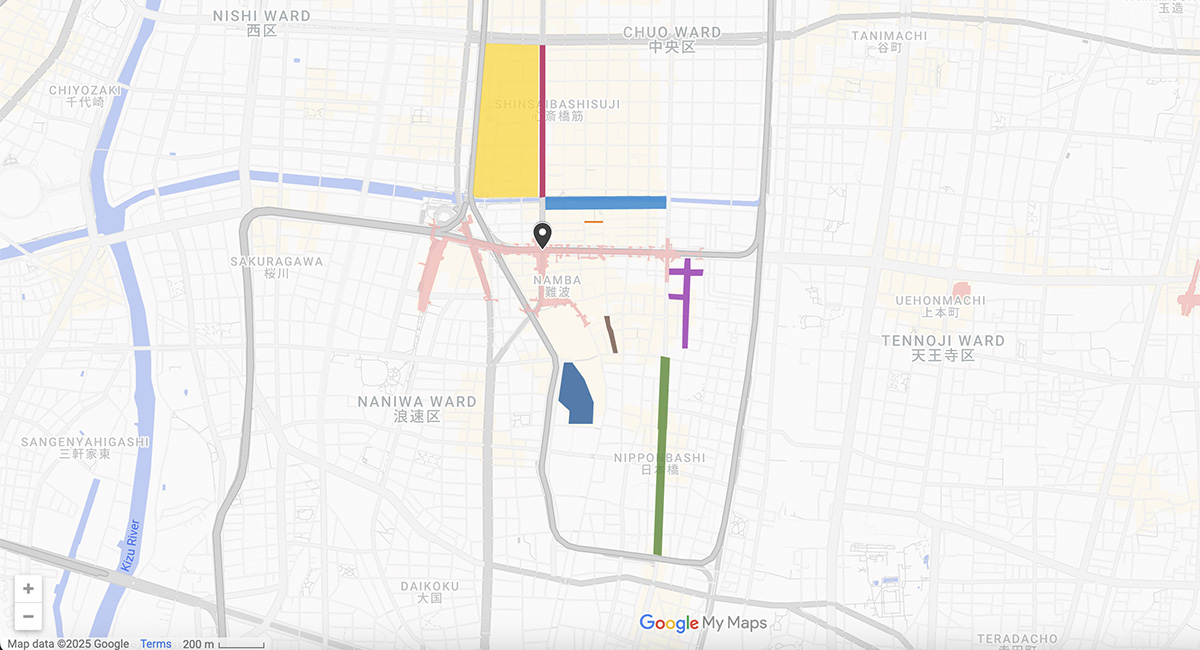
Dotonbori
Dotonbori is the pulsating heart of Namba. Like Shinjuku or Shibuya in Tokyo, it’s one of the most famous shopping and entertainment districts in Japan.
Dotonbori refers to the street that runs parallel to the Dotonbori Canal. It’s busy during the daytime but at night, it truly comes alive with its towering neon signs, giant mechanical billboards like the Glico Running Man, and a dizzying array of restaurants and Japanese street food stalls.
From takoyaki and okonomiyaki to sushi and barbecued skewers of Kobe Beef, whatever you’re in the mood for, you can probably find it in Dotonbori.
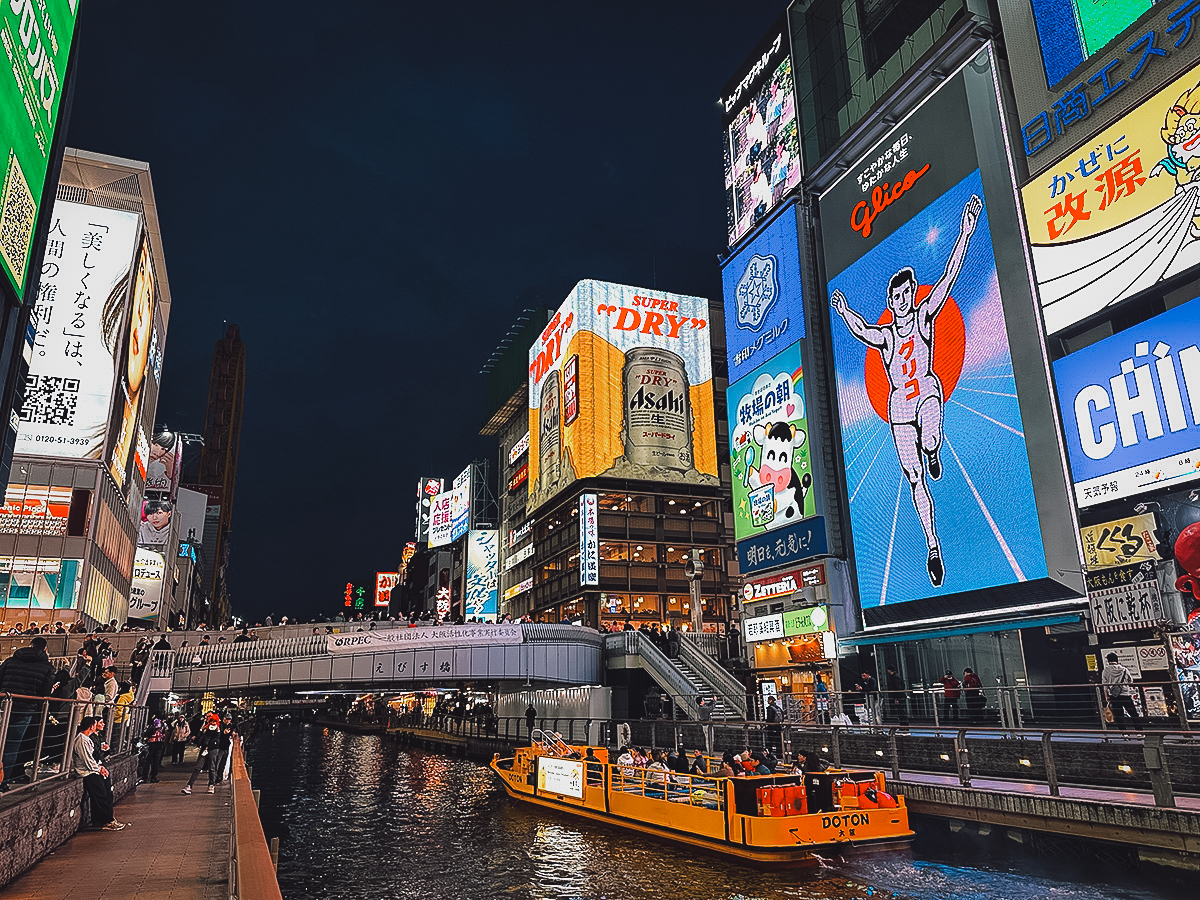
Shinsaibashi Shopping Arcade
There are many shopping venues in Namba, but this 600-meter shopping arcade comes first to mind. Shinsaibashi is Osaka’s most popular shopping arcade and a must for anyone looking to drop a few yen and stimulate the Japanese economy.
Shinsaibashi Shopping Arcade is packed with fashion boutiques, international brands, specialty shops, restaurants, and cafes. Rain or shine, this covered shopping street is always buzzing with people. It’s a little difficult to walk through, but its frenetic energy is part of the charm.
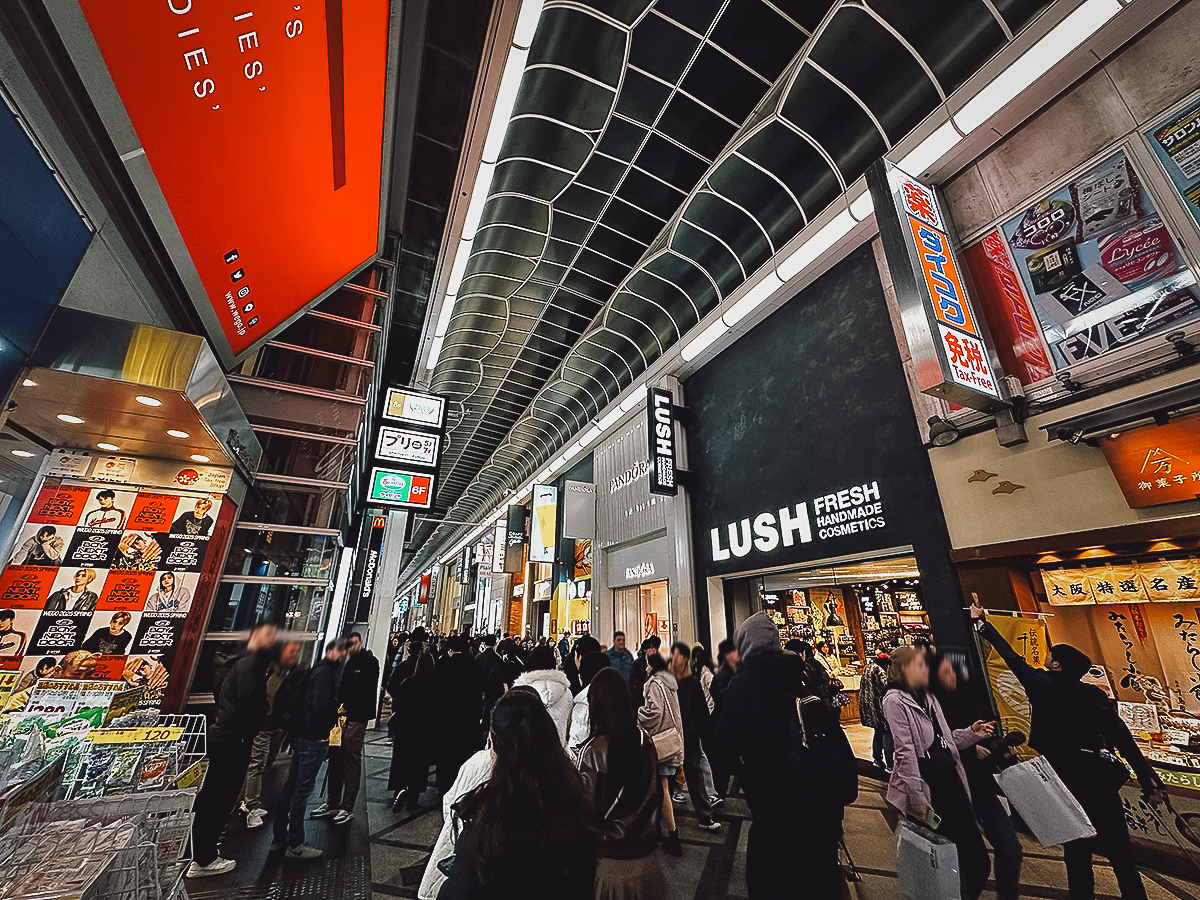
Nipponbashi Denden Town
Running along Sakaisuji Avenue in the Nipponbashi area, Denden Town is an electronics district that’s often likened to Akihabara in Tokyo. With its many arcades, gadget stores, hobby shops, and maid cafes, it’s a haven for tech enthusiasts and anime/manga fans.
While Denden Town shares similarities with Akihabara, it’s a much more subdued version that doesn’t have the same energy as its Tokyo counterpart. Still, it’s a great place to visit for gamers and fans of otaku culture. Be sure to explore the smaller shops tucked away on side streets branching off of Sakaisuji Avenue.
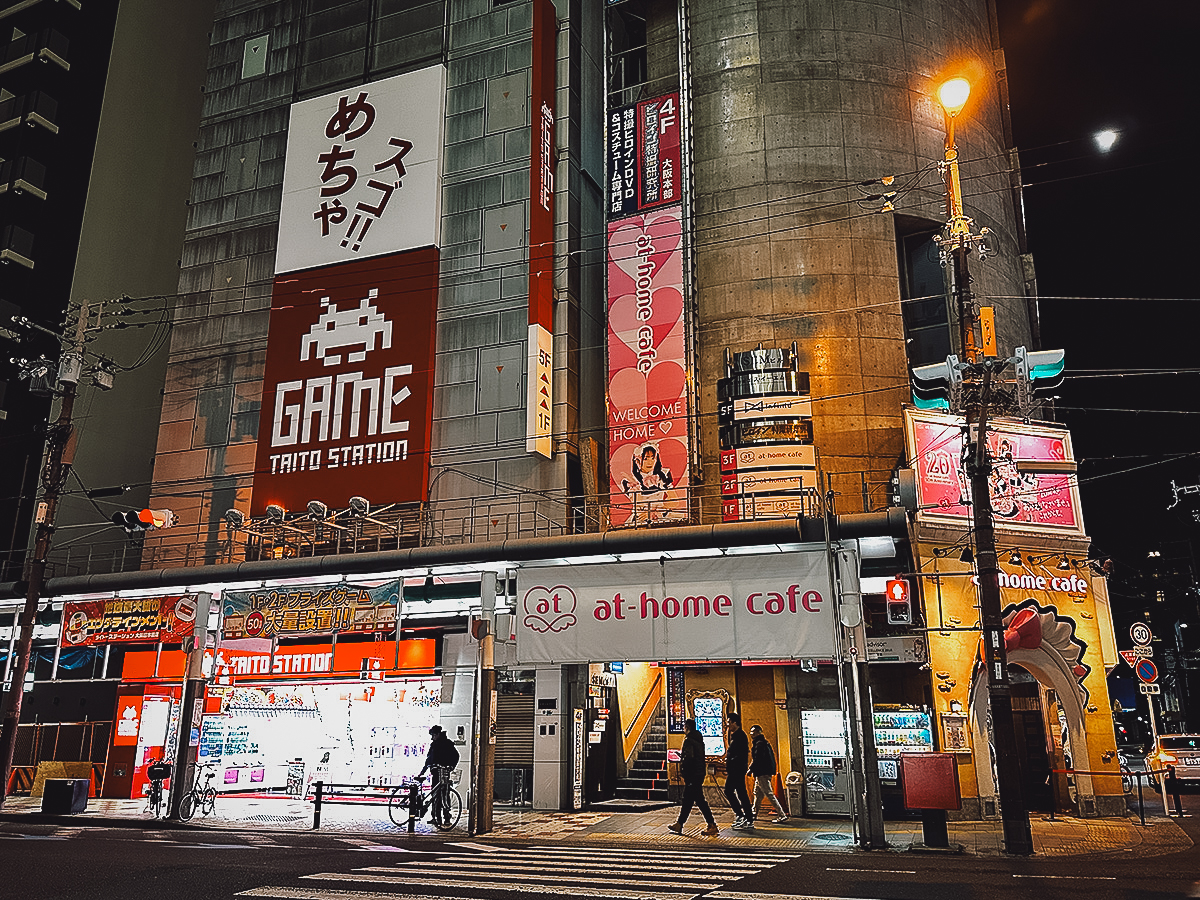
Amerikamura
In the same way that Denden Town is likened to Akihabara, Amerikamura (or Amemura) is Osaka’s answer to Tokyo’s Harajuku. It’s a shopping district that’s been at the heart of Osaka’s youth culture since the 1970s1.
Meaning “America Village”, Amerikamura consists of a network of narrow streets filled with vintage clothing shops, sneaker boutiques, record stores, restaurants, bars, and cafes. Street art and murals liven up the area, giving it an edgy, trendsetting vibe. Similar to Shimokitazawa in Tokyo, it’s a great place to explore and get lost in for a few hours.
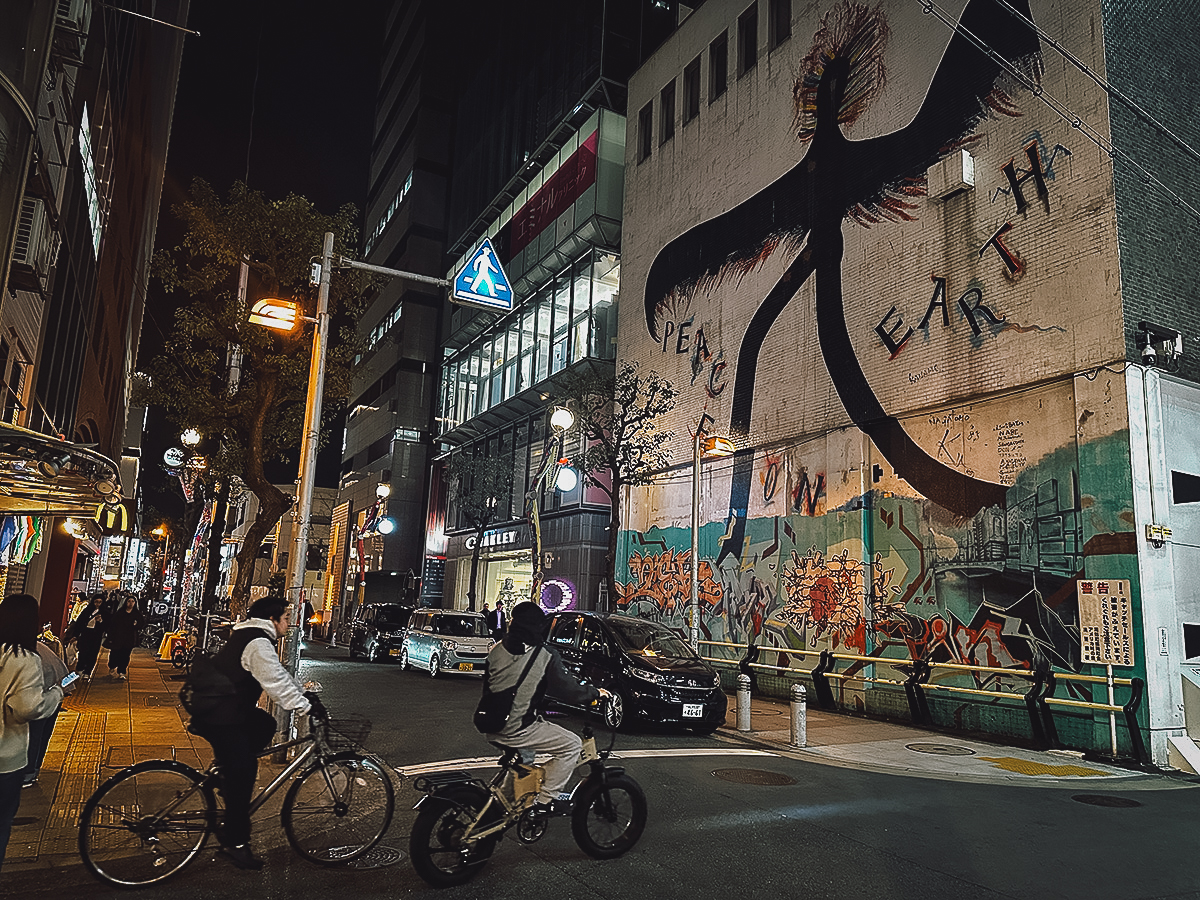
Kuromon Ichiba Market
If you enjoy seafood and street food, then you’re going to love Kuromon Ichiba Market. Often referred to as “Osaka’s Kitchen”, it’s a covered market with around 150 stalls selling fresh seafood, premium wagyu beef, fruit, sweets, and ready-to-eat street snacks.
Kuromon Ichiba Market has been serving the local community for over 170 years2, though it’s become much more touristy in recent decades. Still, it remains a great place to go on a food crawl and feast on dishes like grilled scallops, crab, oysters, sea urchin, wagyu, and sushi.
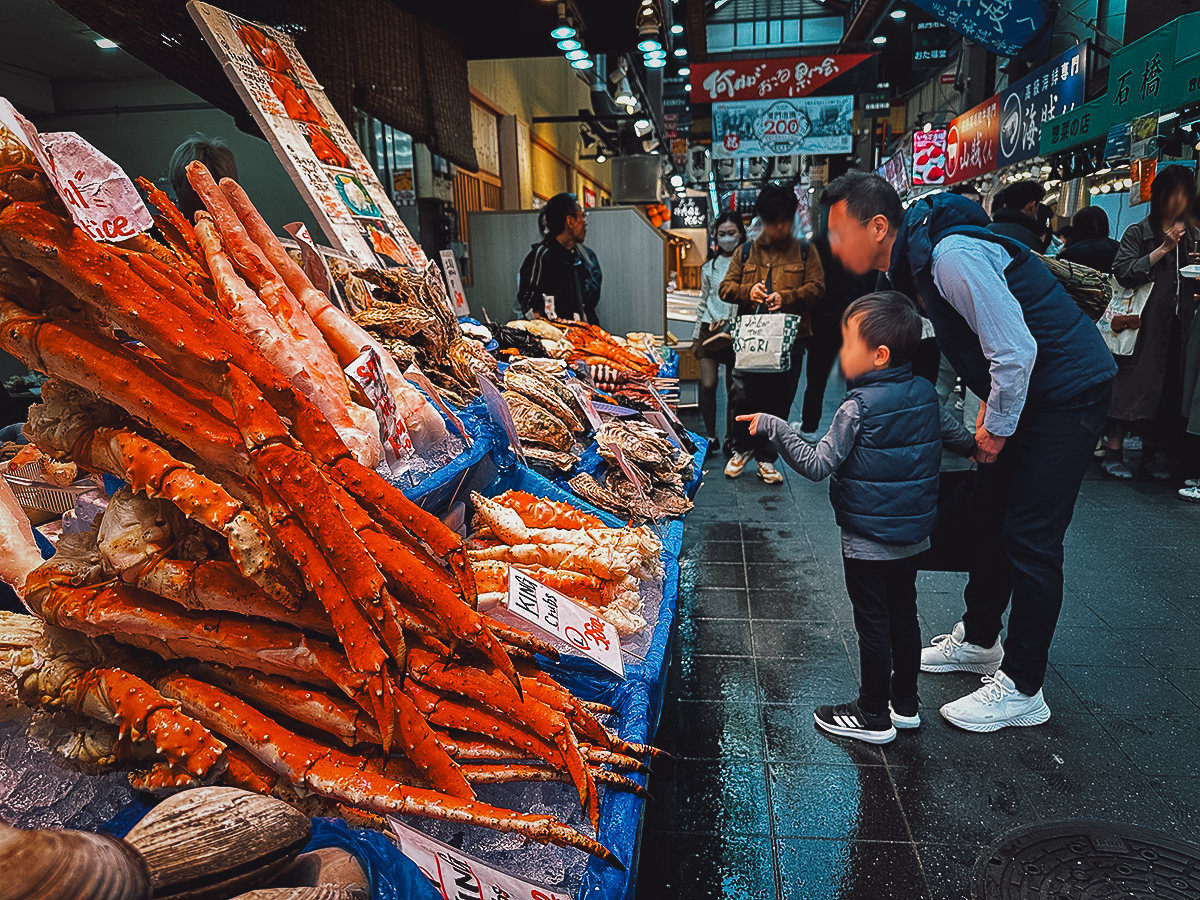
Sennichimae Doguyasuji
Similar to Kappabashi Kitchenware Town in Tokyo, Sennichimae Doguyasuji is the place to go in Osaka for anyone interested in kitchen utensils.
Known as “Kitchenware Street”, Sennichimae Doguyasuji is a covered shopping street filled with stores selling professional-grade kitchenware, high-quality knives, ceramics, and all kinds of traditional tableware. Looking for a takoyaki grill pan? This is the place to find it in Osaka.
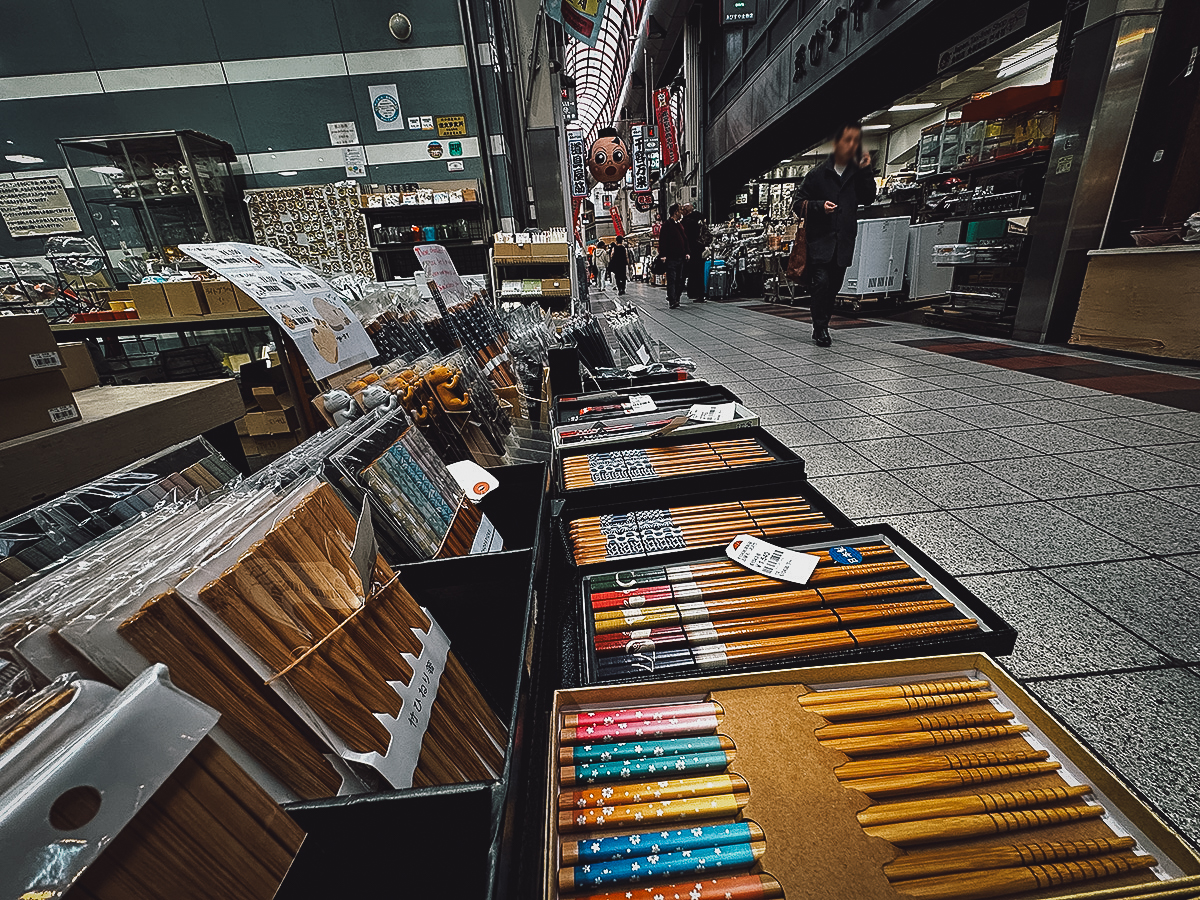
Hozenji Yokocho
I love these tiny, izakaya-filled alleys in Japan. Like Pontocho Alley in Kyoto or Omoide Yokocho in Tokyo, they always make me feel like I’m taking a trip back in time.
Tucked away near Dotonbori, Hozenji Yokocho consists of two narrow alleys lined with traditional restaurants and lantern-lit izakayas. It’s one of the most atmospheric corners of Namba and a great place to get a beer with edamame and sticks of yakitori.
When you visit, be sure to make a stop at Hozenji Temple and its moss-covered statue of Fudo Myo-o. Visitors pour water over the statues for good luck.
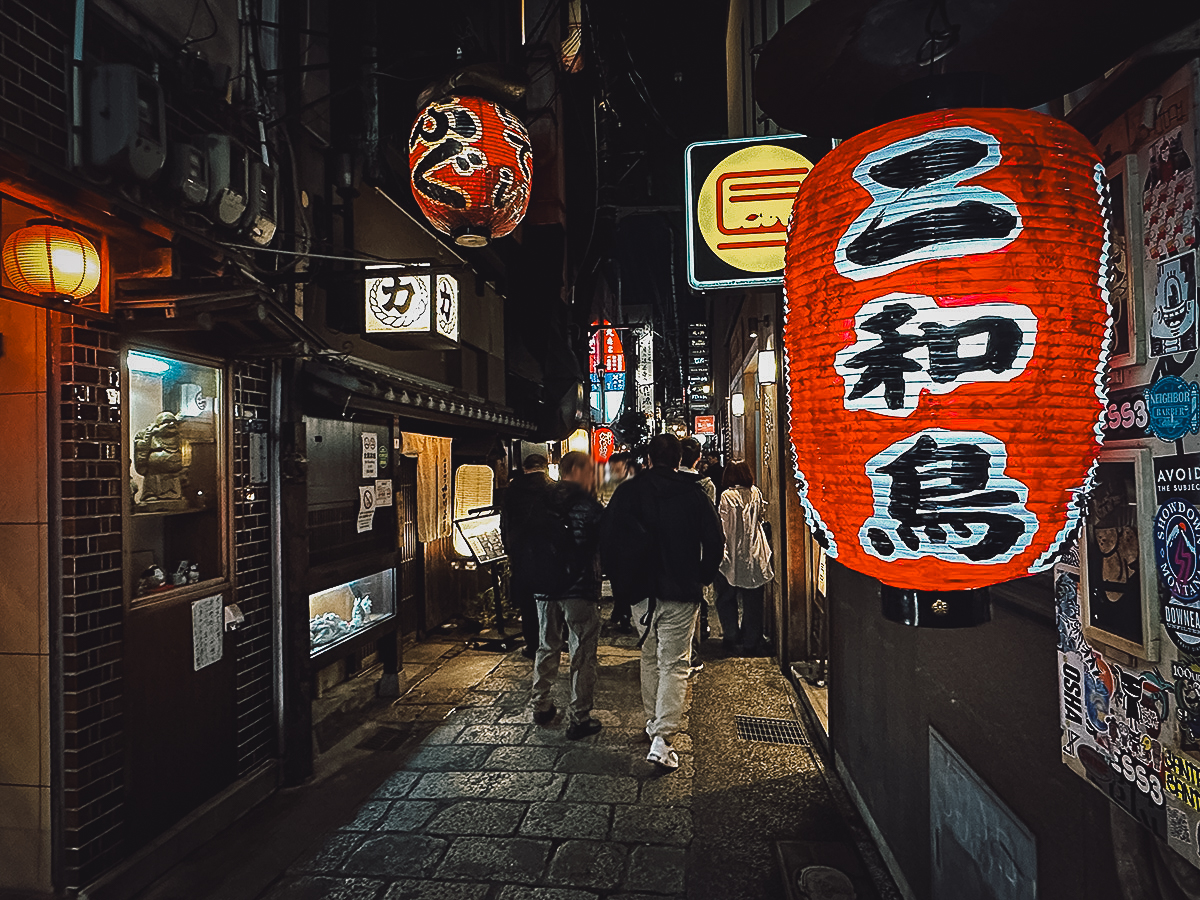
Namba Parks
There’s no shortage of department stores and shopping centers in Namba, but Namba Parks stands out. More than just a shopping mall, it’s an architectural landmark built on the site of Osaka’s former baseball stadium.
What makes Namba Parks unique is its canyon-like design and cascading terraces dressed in greenery. The shopping center is home to around 120 stores and restaurants, a cinema, an amphitheater, and a rooftop garden that feels like a small urban oasis. It’s a great place to unwind and relax after a day of sightseeing and shopping in Osaka.
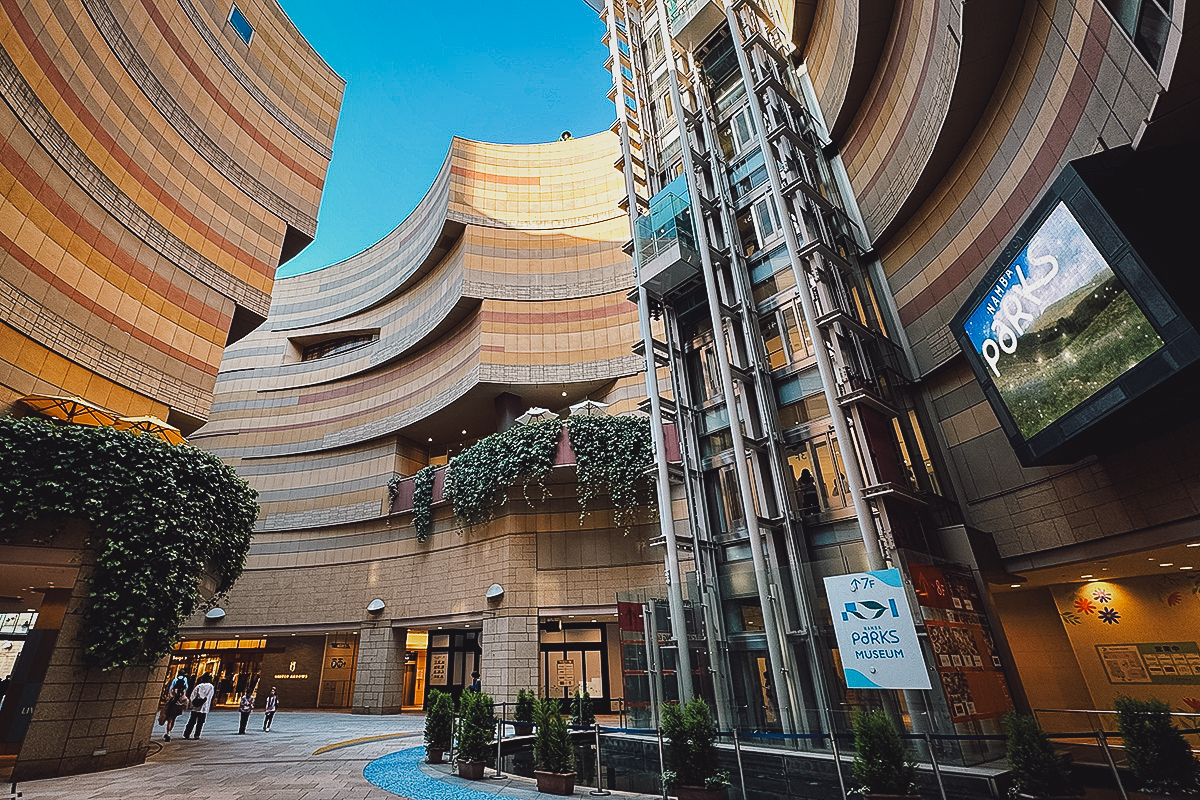
VISIT OSAKA FAQs
How many days will I need in Osaka?
If you don’t plan on visiting Universal Studios Japan, then one or two days should be enough to explore the top attractions in Osaka. Go for two if you don’t want to rush.
Is it easy to get around in Osaka?
Yes, like every major city in Japan, Osaka has a fantastic public transport system. I always get an ICOCA stored value card, but if it’s your first time in Osaka, then it may be worth getting an Osaka Metro Pass or the Osaka Amazing Pass.
The Osaka Metro Pass gives you unlimited rides on the city’s metro and bus systems (or metro only) for one or two consecutive days, along with discounts to select tourist attractions throughout the city.
Also available in 1- or 2-day variants, the Osaka Amazing Pass is a similar pass that gives you unlimited use of the city’s subway and bus systems. On top of that, it grants you free access to many of the city’s top attractions, including Osaka Castle.
THE FINAL SAY
Visiting Osaka without spending time in Namba is like going to Tokyo without hitting up Shinjuku. It’s something that must be done, no matter how many times you’ve been to the city. Personally, it’s what I look forward to the most on every return trip to Osaka.
Disclosure
This Namba travel guide contains affiliate links. That means we’ll make a small commission if you book a tour or hotel (at no added cost to you). We only recommend products and services that we use ourselves and firmly believe in. We really appreciate your support as it helps us make more of these free travel guides. Arigato gozaimasu!
References
1. Rowthorn, Chris (2019, January 22). Amerika-mura (Amemura). Inside Osaka.
2. Kuromon Market. Japan Travel.
